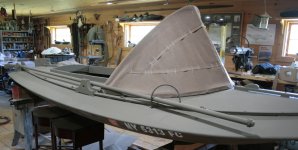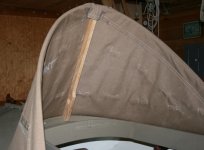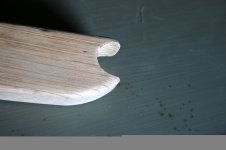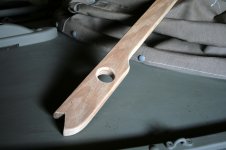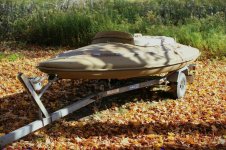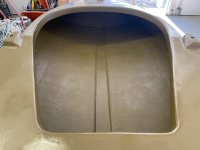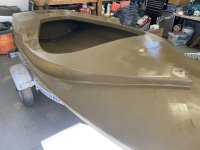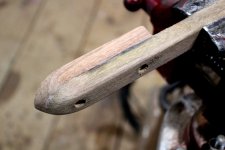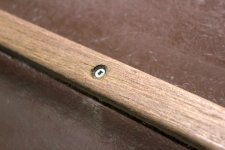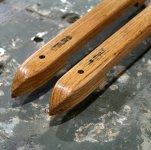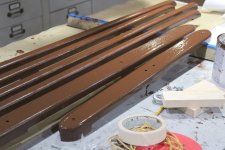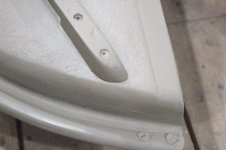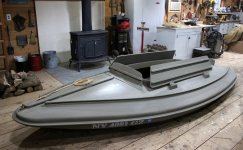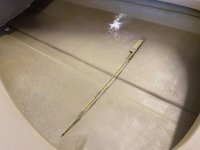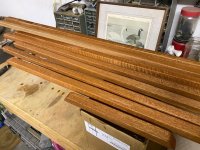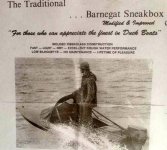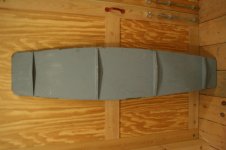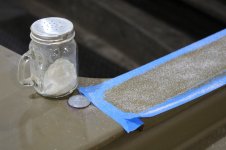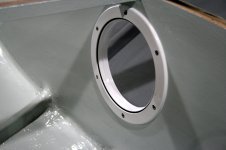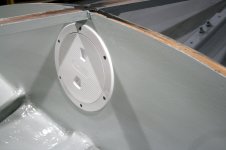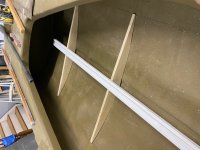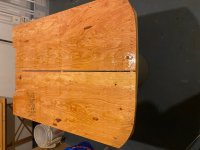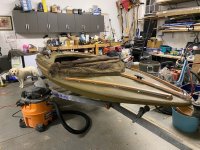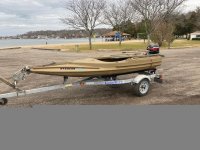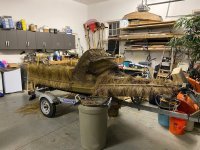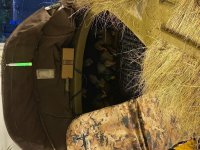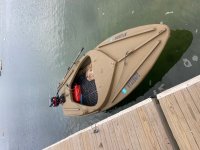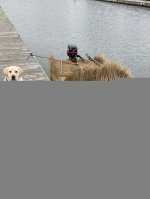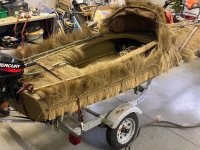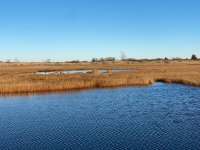Steve Sanford
Well-known member
David~
Yes, I figured out your drains after looking more closely at your photos. I put a pair of garboard drains in this 100-year-old gunning skiff - one on either side of the keel. They are at the low point of the hull when it is on its storage rack.
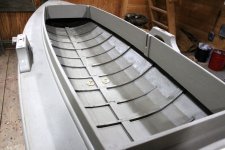
Instead of flap boards, I use a "lap cover" on any vessel where I lie on my back to hide. For my Sneakbox, it is thatched up. It is held across its foot by snaps on the aft coaming. The forward end is supported by a rod across the cockpit that rests in open-top chocks.
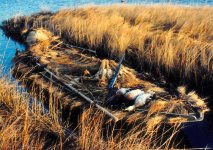
The rod and canvas pop up out of the way when I sit up to shoot. It rolls up onto the after deck when I need to operate the boat.
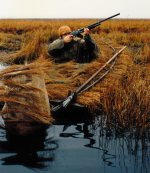
Here is one of my original chocks. Today I would make it from PVC "lumber".
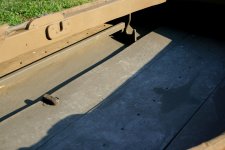
Here is the rod held in a canvas sleeve.
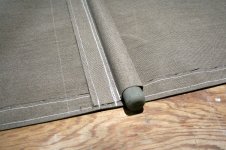
The canvas is taut when in place. About 12 inches of "free" canvas lays on my chest.
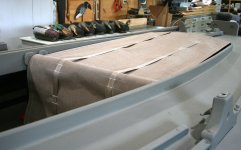
Thatch is lashed to 2 rows of webbing. The foot is snapped to the aft coaming.
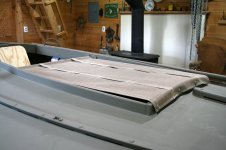
Here is another vessel - a 2-man "scooter" for open bay gunning - with a similar lap canvas. Instead of the rod-and-chocks, this uses just loops of shock cord in each corner, held by thumb cleats.

Here's the duck's eye view.
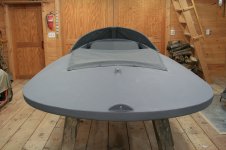
Hope this helps!
SJS
Yes, I figured out your drains after looking more closely at your photos. I put a pair of garboard drains in this 100-year-old gunning skiff - one on either side of the keel. They are at the low point of the hull when it is on its storage rack.

Instead of flap boards, I use a "lap cover" on any vessel where I lie on my back to hide. For my Sneakbox, it is thatched up. It is held across its foot by snaps on the aft coaming. The forward end is supported by a rod across the cockpit that rests in open-top chocks.

The rod and canvas pop up out of the way when I sit up to shoot. It rolls up onto the after deck when I need to operate the boat.

Here is one of my original chocks. Today I would make it from PVC "lumber".

Here is the rod held in a canvas sleeve.

The canvas is taut when in place. About 12 inches of "free" canvas lays on my chest.

Thatch is lashed to 2 rows of webbing. The foot is snapped to the aft coaming.

Here is another vessel - a 2-man "scooter" for open bay gunning - with a similar lap canvas. Instead of the rod-and-chocks, this uses just loops of shock cord in each corner, held by thumb cleats.

Here's the duck's eye view.

Hope this helps!
SJS

